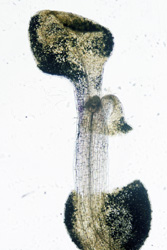'Nervous system' of plants revealed
Electrical signals known as action potentials (APs) are a ubiquitous and rapid signalling system in plants. While a rudimentary model for how APs are transmitted has been proposed, this system remains poorly understood. The EU-funded 'Disclosing the molecular bases of electrical signalling in plants' (PLANTELEXIGNAL) project looked for the molecular mechanisms in plant cells that enable them to produce and propagate APs. Researchers studied Arabidopsis thaliana, a model plant species, using genetic engineering and sophisticated sensor systems. Specifically, the project studied two potassium (K+) channels, which are proteins in the cell wall thought to be responsible for maintaining APs in cells. In addition, researchers investigated changes in the concentration of calcium (Ca2+), which is also linked to signalling in plants. They found that two K+ channels, called AKT2 and GORK, controlled different aspects of APs in plants. AKT2 controls the likelihood of an AP being propagated to nearby cells, while GORK influences the amplitude and length of the signal. Using sophisticated sensing equipment, PLANTELEXIGNAL found that AP-like and Ca2+ signals occurred in similar regions of the plant, such as the veins of leaves. In addition, they travelled at similar speeds through the plant, suggesting a link between Ca2+ signalling and APs. The work of PLANTELEXIGNAL has revealed specific molecules involved in AP signalling in plants for the first time. This will provide a basis to study electrical signalling in plants in much greater detail.







